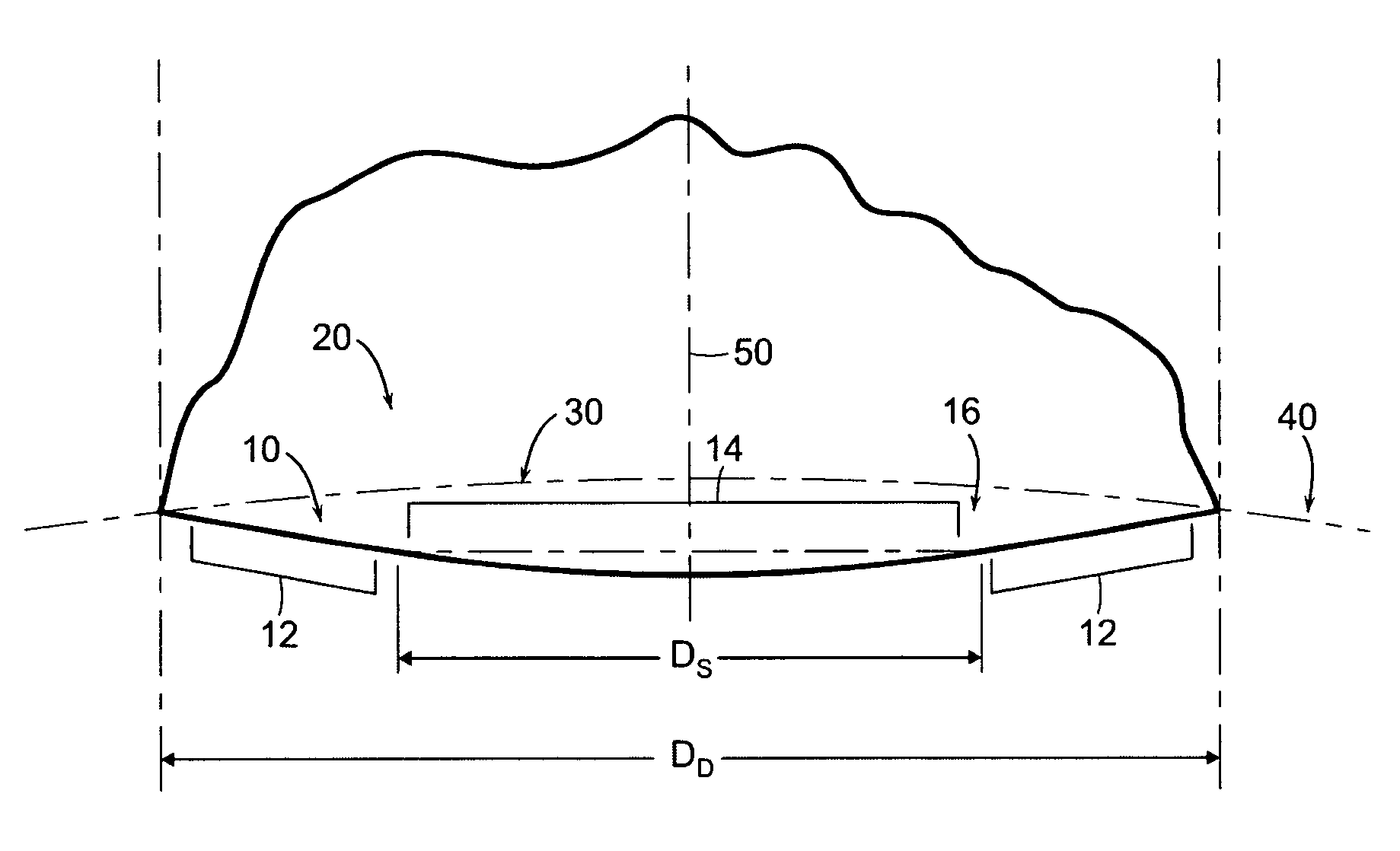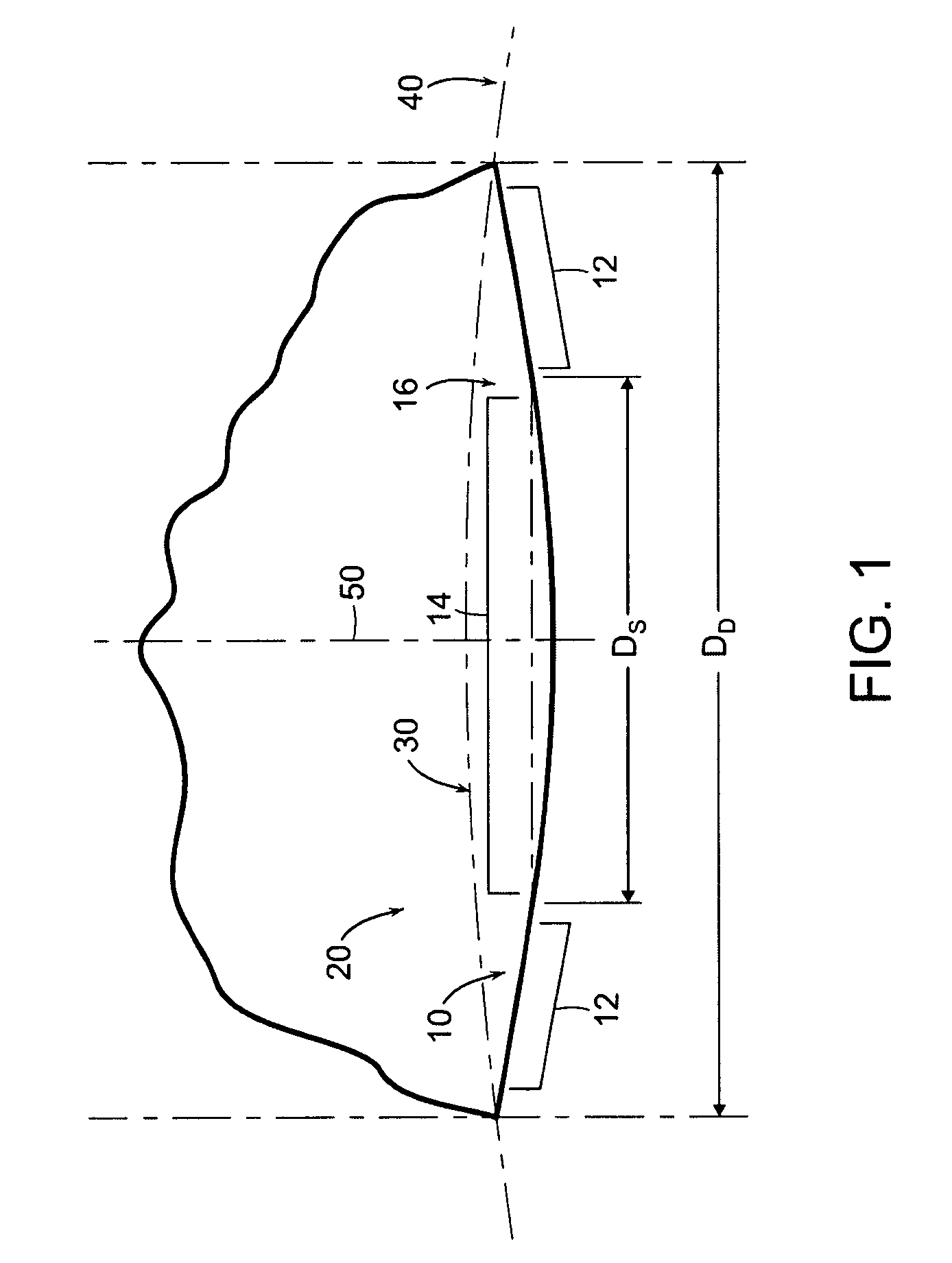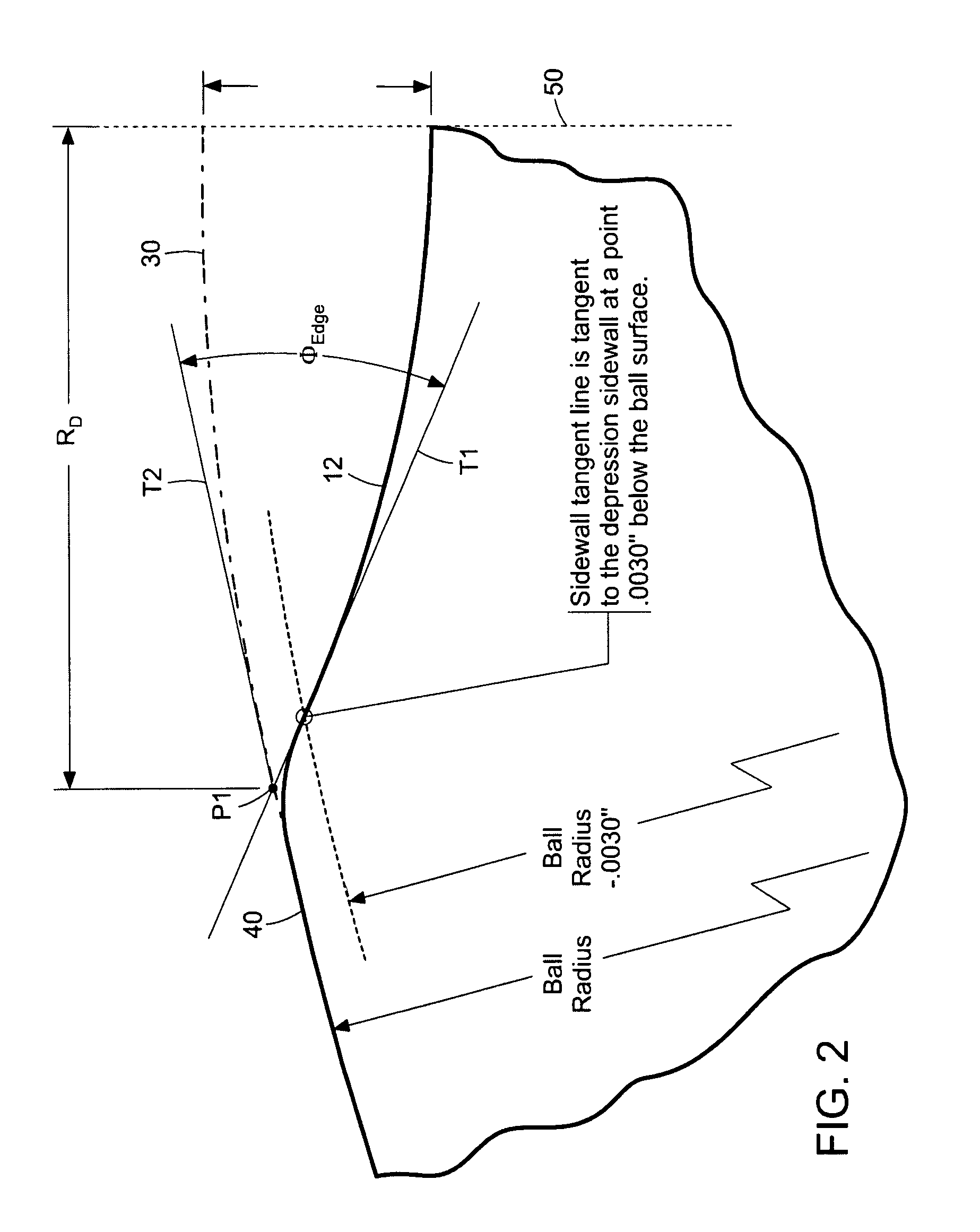Golf ball dimple profile
a dimple profile and golf ball technology, applied in the field of golf balls, can solve the problems of cumbersome mathematical descriptions, uneven continuous dimple profiles, and ineffective coverage of tiny dimples
- Summary
- Abstract
- Description
- Claims
- Application Information
AI Technical Summary
Benefits of technology
Problems solved by technology
Method used
Image
Examples
Embodiment Construction
[0019]The present invention concerns a golf ball with dimples having a cross-sectional profile comprising a conical base shape and a spherical cap with a prescribed point of tangency to the cone sidewall. More particularly, the conical profiles of the present invention are defined by three parameters: dimple diameter (DD), edge angle (ΦEDGE), and saucer ratio (Sr) which is a measure of the relative curvature of the dimple bottom. These parameters fully define the dimple shape and allow for greater flexibility in constructing a dimple profile versus conventional spherical dimples. Further, conical dimples provide a unique dimple cross-section which is visually distinct.
[0020]FIG. 1 is a cross-sectional view illustrating a dimple 10 on a golf ball 20 having an outer spherical surface with a phantom portion 30 and an undimpled land area 40. A rotational axis 50 vertically traverses the center of dimple 10. The dimple 10 comprises a top conical edge 12 (an edge with no radius) and a bot...
PUM
 Login to View More
Login to View More Abstract
Description
Claims
Application Information
 Login to View More
Login to View More - R&D
- Intellectual Property
- Life Sciences
- Materials
- Tech Scout
- Unparalleled Data Quality
- Higher Quality Content
- 60% Fewer Hallucinations
Browse by: Latest US Patents, China's latest patents, Technical Efficacy Thesaurus, Application Domain, Technology Topic, Popular Technical Reports.
© 2025 PatSnap. All rights reserved.Legal|Privacy policy|Modern Slavery Act Transparency Statement|Sitemap|About US| Contact US: help@patsnap.com



